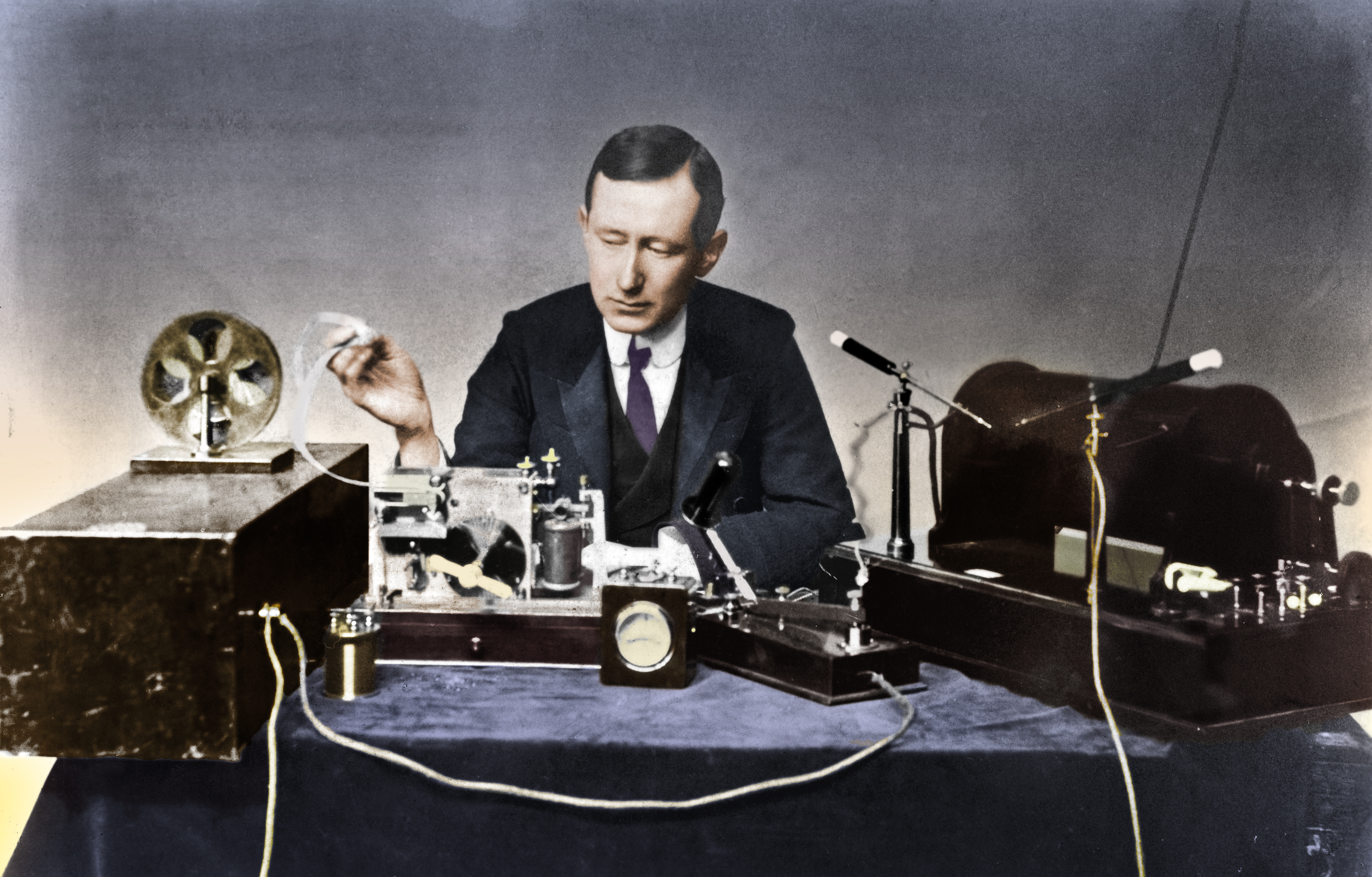Marconi, Guglielmo, << mahr KOH nee, goo LYEHL moh >> (1874-1937), was an Italian inventor who popularized wireless telegraphy, or radio. He was one of the first inventors to send telegraph signals through the air using radio waves. Telegraph signals previously had been transmitted through wires. Marconi shared the 1909 Nobel Prize in physics with Karl Ferdinand Braun of Germany, who developed ways of increasing the range of radio transmissions.

Early life.
Marconi was born on April 25, 1874, in Bologna, Italy. His father was a wealthy landowner. As a child, Guglielmo took a strong interest in science. After failing the University of Bologna entrance exam, he pursued his scientific studies on his own. Inspired by the German physicist Heinrich Hertz’s work with electromagnetic waves, Marconi began experimenting with wireless telegraphy in 1894. Working in an attic on his father’s estate, he transmitted signals across the room. Marconi later experimented outdoors. He found that when his transmitter and receiver were grounded (connected to earth), and when he increased the height of the antenna, he could greatly extend a signal’s range.
The Italian government showed no interest in the young, unschooled inventor’s work, so Marconi went to the United Kingdom. There, in 1896, he received his first patent on wireless telegraphy. Marconi founded the Wireless Telegraph and Signal Company, Ltd., in London in 1897. In 1899, he sent a wireless message across the English Channel to France, and ships began using his system.
First transatlantic signal.
On Dec. 12, 1901, Marconi and his staff sent and received the first wireless transatlantic communication in history. Marconi’s transmitting station sent the Morse code letter s from Poldhu, Cornwall, England, to St. John’s, Canada, where Marconi received it. Ships were soon using Marconi’s equipment to communicate with each other and with the shore over hundreds of miles or kilometers. Marconi’s equipment helped bring rescue ships for the sinking ocean liners Republic in 1909 and Titanic in 1912, saving many lives. These accidents led to laws requiring that all large passenger ships have wireless equipment.
Loading the player...Marconi describes first transatlantic wireless communication
After 1902, Marconi devoted more of his time to managing his companies, which by 1914 dominated the wireless industry in both the United Kingdom and the United States. In 1919, Marconi’s American company became part of the Radio Corporation of America (RCA).
Short-wave radio.
During the 1920’s, Marconi turned his attention to short waves and microwaves. The existing commercial wireless equipment used long radio waves, which required large, powerful transmitters. But short-wave stations did not need such transmitters, and they cost less to build and operate. Short waves, unlike long waves, could be used as effectively during the day as at night. Marconi and his staff perfected the beam system, which used directional antennas and reflectors. This system made short-wave radio an efficient, reliable method of communication. Marconi’s team also built the first microwave telephone system in 1932.
Marconi and Tesla.
While Marconi was experimenting with wireless telegraphy, other prominent inventors were also working to develop the technology. One of these inventors was Nikola Tesla, an American from Austria-Hungary. By 1898, Tesla had developed high-voltage, high-frequency equipment to send signals between his laboratory and hotel in New York City. But while Tesla ambitiously planned to use his system to transmit electric power, Marconi concentrated on the profitable market of ship-to-shore communications. Marconi died on July 20, 1937.
In 1943, the Supreme Court of the United States invalidated many of Marconi’s U.S. patents for radio communications equipment. It recognized that Tesla had patented a number of key radio inventions prior to Marconi.
